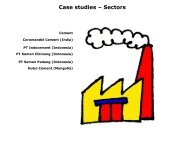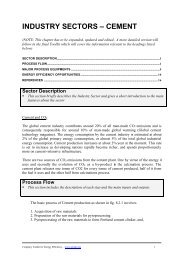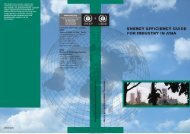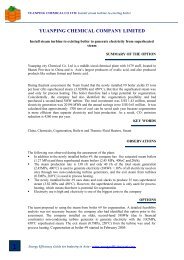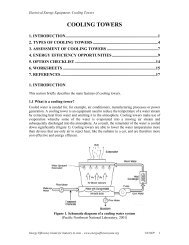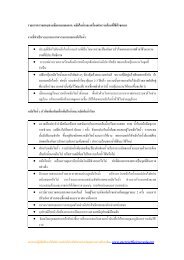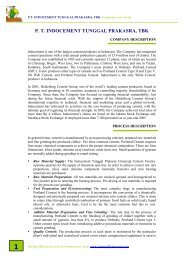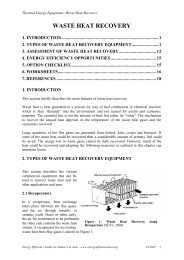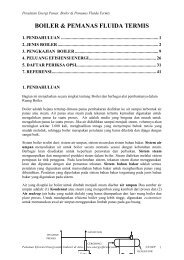Chapter - Fuels and Combustion - RETScreen International
Chapter - Fuels and Combustion - RETScreen International
Chapter - Fuels and Combustion - RETScreen International
You also want an ePaper? Increase the reach of your titles
YUMPU automatically turns print PDFs into web optimized ePapers that Google loves.
Thermal Equipment: <strong>Fuels</strong> <strong>and</strong> <strong>Combustion</strong><br />
C + O 2 → CO 2 + 8,084 kcals/kg of Carbon<br />
2C + O 2 → 2 CO + 2,430 kcals/kg of Carbon<br />
2H 2 + O 2 → 2H 2 O + 28,922 kcals/kg of Hydrogen<br />
S + O 2 → SO 2 + 2,224 kcals/kg of Sulphur<br />
Each kilogram of CO formed means a loss of 5654 kCal of heat (8084 –2430).<br />
3.1.2 Three T’s of combustion<br />
The objective of good combustion is to release all of the heat in the fuel. This is<br />
accomplished by controlling the "three T's" of combustion which are (1) Temperature high<br />
enough to ignite <strong>and</strong> maintain ignition of the fuel, (2) Turbulence or intimate mixing of the<br />
fuel <strong>and</strong> oxygen, <strong>and</strong> (3) Time, sufficient for complete combustion.<br />
Commonly used fuels like natural gas <strong>and</strong> propane generally consist of carbon <strong>and</strong> hydrogen.<br />
Water vapor is a by-product of burning hydrogen. This removes heat from the flue gases,<br />
which would otherwise be available for more heat transfer.<br />
Natural gas contains more hydrogen <strong>and</strong> less carbon per kg than fuel oils <strong>and</strong> as such<br />
produces more water vapor. Consequently, more heat will be carried away by exhaust while<br />
firing natural gas.<br />
Too much, or too little fuel with the available combustion air may potentially result in<br />
unburned fuel <strong>and</strong> carbon monoxide generation. A very specific amount of O2 is needed for<br />
perfect combustion <strong>and</strong> some additional (excess) air is required for ensuring complete<br />
combustion. However, too much excess air will result in heat <strong>and</strong> efficiency losses.<br />
Not all of the fuel is converted to heat <strong>and</strong> absorbed by the steam generation equipment.<br />
Usually all of the hydrogen in the fuel is burned <strong>and</strong> most boiler fuels, allowable with today's<br />
air pollution st<strong>and</strong>ards, contain little or no sulfur. So the main challenge in combustion<br />
efficiency is directed toward unburned carbon (in the ash or incompletely burned gas), which<br />
forms CO instead of CO2.<br />
Figure 1. Perfect, good <strong>and</strong> incomplete combustion<br />
(Bureau of Energy Efficiency, 2004)<br />
Energy Efficiency Guide for Industry in Asia – www.energyefficiencyasia.org ©UNEP 12



